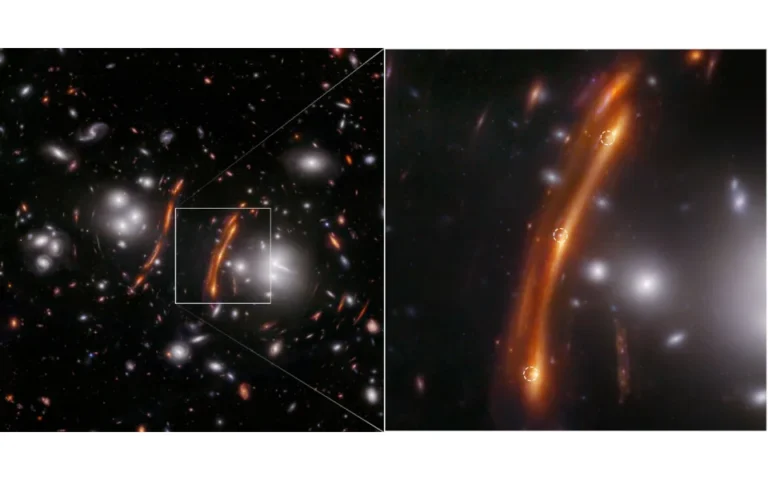In order to obtain this picture, the James Webb Space Telescope was utilized.
In a region that is approximately 3.6 billion light-years distant from Earth, the Near-Infrared Camera (NIRCam) of the James Webb Space Telescope was able to capture an intriguing sight: An image that contains three separate supernovae, each of which occurs at a different time during the explosion of the supernova. Even more importantly, this picture has the potential to assist scientists in better comprehending the rate at which the universe is expanding.
The galaxy cluster PLCK G165.7+67.0, also referred to as G165, was selected for observation by a group of researchers due to the fact that it has a high star rate creation capacity, which in turn results in higher supernova rates. You can see an example of what appears to be a streak of light in the image that is shown above. The image contains three distinct dots that appear to be brighter than the rest of the streak. According to the explanation provided by Dr. Brenda Frye from the University of Arizona, the dots are representative of an exploding white dwarf star. Additionally, it is gravitationally lensed, which means that there is a cluster of galaxies that is located between us and the star that acts as a lens, causing the light from the supernova to be bent together into several images. The analogy that Frye used to describe it was that of a trifold mirror, which reveals a different image of the person who is seated in front of it. Note that it is the most distant Type Ia supernova that has ever been observed to this day. A Type Ia supernova is a type of supernova that occurs in a binary system.
The supernova caused light from the explosion to travel along three distinct pathways, each of which had a different length. This was due to the cluster of galaxies that was located in front of the explosion. This indicates that the Webb telescope was able to record different phases of the explosion in a single image: the beginning of the event, the middle of it, and the end of it. It was stated by Frye that trifold supernova photos are unique due to the fact that the “time delays, supernova distance, and gravitational lensing properties yield a value for the Hubble constant or H0 (pronounced H-naught).”
The Hubble constant is a statistic that is used by NASA to define the expansion rate of the cosmos at the present time. This expansion rate, in turn, has the potential to provide further information regarding the creation and history of the universe. Despite the fact that scientists have not yet reached a consensus on its precise value, the team is holding out hope that this supernova image will shed some light on the matter. “The supernova was named SN H0pe since it gives astronomers hope to better understand the universe’s changing expansion rate,” Frye explained to reporters.
In the year 2001, Wendy Freedman, who was affiliated with the University of Chicago, headed a group that discovered a value of 72. This Hubble constant has been estimated by several researchers to be somewhere between 69.8 and 74 kilometers per second per megaparsec. While this was going on, this group reported a value of 75.4, which might be either 8.1 or 5.5. “Our team’s results are impactful: The Hubble constant value matches other measurements in the local universe, and is somewhat in tension with values obtained when the universe was young,” Frye explained to reporters. However, the supernova and the Hubble constant number that was generated from it need to be investigated further, and the team anticipates that future observations will “improve on the uncertainties” in order to produce a more precise computation.

